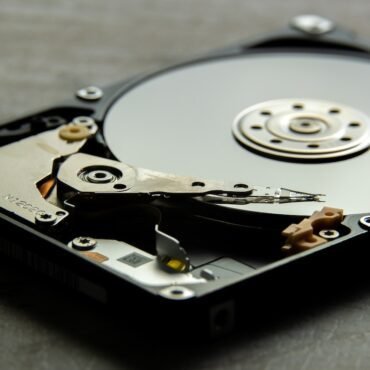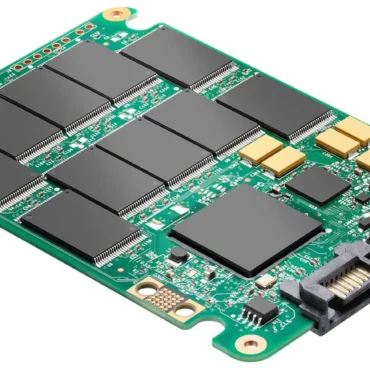Hard Drive Failures: How Data Recovery Experts Restore Your Information
In today’s digital-first world, hard drives (HDDs and SSDs) remain the backbone of personal and professional data storage. Whether it’s family photos, confidential business files, or entire databases, losing access to a hard drive can feel catastrophic.
But don’t panic—data recovery experts specialize in restoring lost or inaccessible files from failed drives. This blog explores the causes of hard drive failures, the recovery process, advanced techniques, and why professional services are your best option for getting your valuable data back.
1. Common Causes of Hard Drive Failure
Understanding why hard drives fail is the first step toward recovery. Failures generally fall into two main categories: physical and logical.
a) Physical Failures
These occur when the mechanical or electronic parts of the drive malfunction.
-
Head Crash: The read/write head touches the platter, damaging the surface.
-
Motor Failure: The spindle motor that spins the platters stops working.
-
PCB Damage: Power surges or overheating fry the drive’s circuit board.
-
Wear and Tear: Over time, moving components degrade and fail.
b) Logical Failures
These happen when data structure or file systems are corrupted but the drive hardware remains intact.
-
Accidental Deletion: Files or partitions are removed unintentionally.
-
File System Corruption: Improper shutdowns or malware damage the file index.
-
Bad Sectors: Parts of the drive become unreadable.
-
OS Errors: Software-level crashes prevent access to data.
2. The Role of Data Recovery Experts
Unlike DIY recovery attempts that risk permanent data loss, data recovery experts follow a structured, scientific process using specialized tools. Their goals are:
-
Identify the exact cause of failure
-
Ensure data integrity and security
-
Restore maximum possible data without altering originals
3. The Data Recovery Process Step by Step
Step 1: Initial Diagnosis
-
Experts begin with a non-invasive assessment of the drive.
-
Tools like diagnostic software or specialized hardware help determine whether the failure is physical, logical, or both.
-
A cost and time estimate is shared after analysis.
Step 2: Creating a Forensic Image
-
Before any recovery attempt, professionals create a sector-by-sector clone (image) of the drive.
-
This ensures the original drive remains untouched, preventing further damage.
-
All recovery work is performed on the clone, not the original.
Step 3: Physical Repair (if needed)
-
If the drive is physically damaged, experts may replace faulty components.
-
Cleanroom environments (dust-free labs) are used for procedures like head or platter replacements.
-
Damaged PCBs may be swapped with donor boards and reprogrammed to match.
Step 4: Logical Recovery
-
Once the drive is operational, software tools scan the file system.
-
Metadata, directory structures, and partition tables are reconstructed.
-
Advanced algorithms rebuild corrupted or fragmented files.
Step 5: Data Extraction and Verification
-
Recovered data is extracted onto secure storage devices.
-
Verification checks ensure file integrity and usability.
-
Sensitive information is kept confidential and secure.
4. Advanced Tools and Techniques Used
Data recovery experts rely on specialized tools unavailable to the public, including:
-
Cleanroom Technology: Dust-free labs for handling sensitive drive internals.
-
Firmware Repair Tools: To reprogram or repair damaged firmware.
-
Imaging Devices (e.g., Tableau, DeepSpar): For creating accurate clones of failing drives.
-
Hex Editors: For repairing corrupted file systems at the binary level.
-
Proprietary Recovery Software: Customized tools capable of reconstructing complex data structures.
5. Why DIY Recovery Often Fails
Many users attempt free software or manual fixes, but this often worsens the problem. Here’s why:
-
Risk of Overwriting: New installations or data recovery attempts may overwrite lost files.
-
No Protection for Physical Damage: Software cannot fix mechanical issues like head crashes.
-
Increased Data Loss: Opening a drive outside of a cleanroom may cause dust contamination and irreversible platter damage.
-
Lack of Expertise: Without knowledge of file systems, partition mapping, and firmware, recovery is incomplete.
6. Benefits of Professional Data Recovery
Choosing experts ensures:
-
Higher Success Rate: Professionals use advanced tools to maximize recovery.
-
Data Security and Confidentiality: Trusted labs follow strict privacy protocols.
-
Cost-Effectiveness: While services aren’t cheap, they’re often less costly than losing critical data permanently.
-
Legal Admissibility: For corporate or forensic cases, expert recovery ensures the chain of custody is intact.
7. Preventing Future Hard Drive Failures
While not all failures are avoidable, you can reduce risks with these practices:
-
Regular Backups: Use cloud storage or external drives.
-
Avoid Overheating: Ensure proper ventilation and cooling.
-
Power Protection: Use surge protectors or UPS to avoid electrical damage.
-
Handle with Care: Avoid physical shocks or mishandling of drives.
-
Run Health Checks: Use tools like SMART monitoring to detect early signs of failure.
Conclusion
Hard drive failures can be devastating, but with the right expertise, data recovery experts can restore lost information and save you from permanent loss. From diagnosing failures to using advanced cleanroom techniques and recovery software, these specialists provide hope when disaster strikes.
Instead of risking DIY attempts, trusting professionals ensures your data is recovered safely, securely, and efficiently—often when it matters the most.





John Jacob on October 8, 2025
Great article! It clearly explains why hard drives fail and why professional recovery is worth it. The step-by-step process and tips for preventing future issues are super helpful. Definitely a must-read for anyone wanting to protect their data!
Admin on October 8, 2025
Thank you so much for your kind words! We’re glad you found the article informative and helpful. Understanding why hard drives fail and how professional data recovery works can truly make a difference when it comes to protecting valuable information. Your appreciation motivates us to keep sharing more insightful content on digital forensics and data recovery best practices!